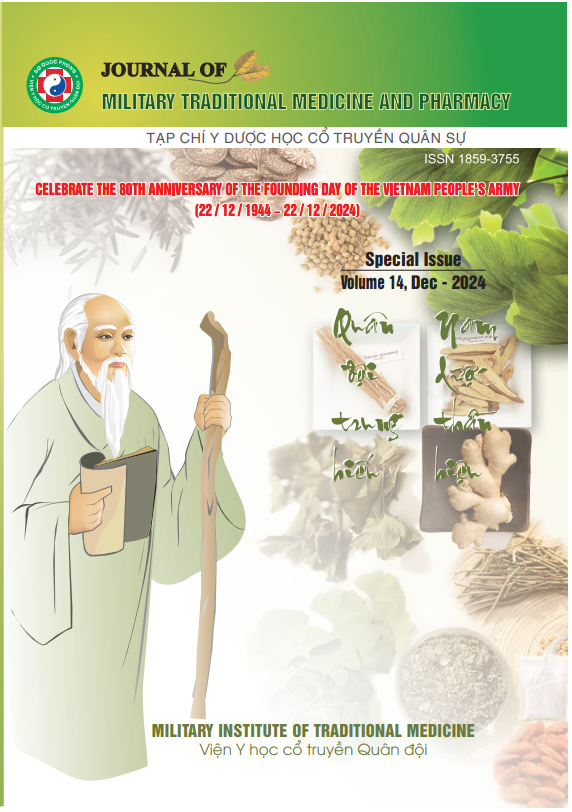APPLICATION OF “TIEU SAI HO THANG” IN CLINICAL PRACTICE
Nội dung chính của bài viết
Tóm tắt
Tieu sai ho thang, a renowned prescription from "Thuong Han Luan" by Truong Trong Canh, is widely used in traditional medicine to harmonize the Shao yang. The prescription consists of seven ingredients: Sai ho, Hoang cam, Ban Ha, Sinh khuong, Nhan sam, Cam thao, and Dai tao. It has the effects of clearing heat and detoxifying, soothing the liver and benefiting the gallbladder, regulating cold and heat, strengthening the vital energy, and improving the body's metabolism. This prescirption can be modified to treat specific conditions associated with disharmony between the liver and spleen, such as hepatitis, cholecystitis, bone and joint pain, and neurological disorders. Variations of Tieu sai ho thang, such as Sai ho gia que chi thang, Sai ho gia thuoc duoc thang, and Sai ho que chi can khuong thang, are used based on symptoms and disease patterns. Tieu sai ho thang not only clears heat but also boosts immunity, balances Yin and Yang, and regulates energy and blood, making it suitable for conditions involving cold-heat imbalance, energy stagnation, and diseases caused by external pathogenic factors invasion. It is a representative prescription for harmonizing the Shao yang in Traditional medicine.
Chi tiết bài viết
Từ khóa
Tiểu sài hồ thang
Tài liệu tham khảo
2. Trinh Chieu Hoan (2006). Application and theory of combination of medicinal herbs in traditional medical prescriptions. Chinese Traditional Medicine and Pharmacology Publishing House, 240.
3. Tran Minh et al. (2007). Luu Do Chau, Thuong han lam chung chi yeu. Hoc Pham Publishing House, Beijing, China; 143.
4. Luu Do Chau (2008). Lectures on Thuong Han Luan. Chinese Ministry of Health Publishing House, 89.
5. Luu Hoc Van et al. (2008). Handbook of Traditional medical prescriptions. Shanghai University of Traditional Chinese Medicine and Pharmacology Publishing House, China; 52.
6. Hoang Hoang (2008). Medical syndromes and Classical Prescriptions. Chinese Ministry of Health Publishing House, 24-31.
7. Hoang Bao Chau (2009). Kim quy yeu luoc phuong luan. Culture and Information Publishing House, 271.
8. Nguyen Hoai Van et al. (2022). Thuong han luan. Medical Publishing House, 58


